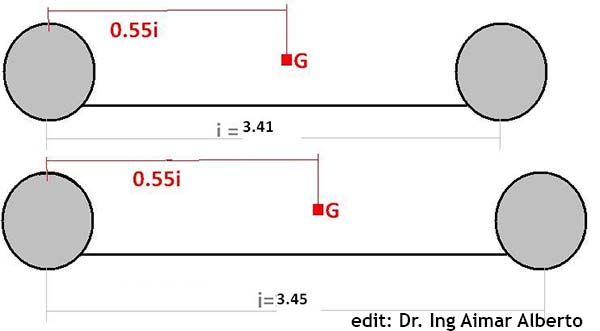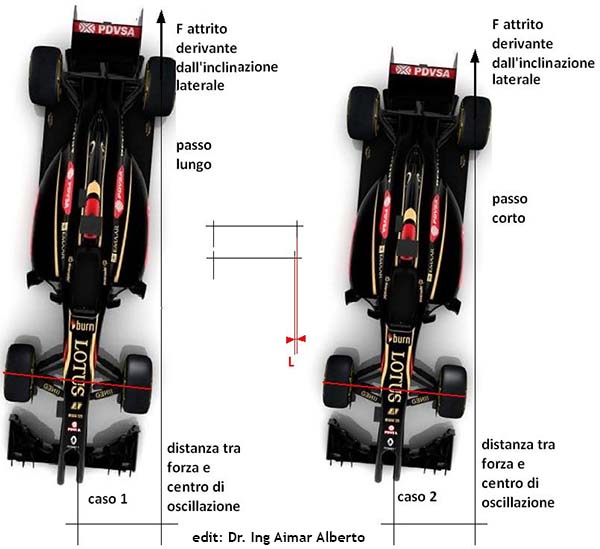F1 Technical News: The Pace of Formula 1: Ferrari & Red Bull Comparison
Let’s talk about the pace of a Formula 1 car and we do so by addressing what we saw in Monza, but especially in anticipation for a difficult race like Singapore.
The cars being compared are the Red Bull and the Ferrari.
It seems that the Austrian Car compared to the Italian gains something with regard to the length of the wheelbase, but how do these choices reflect on the track?
Clearly I cannot give a definite answer, given the fact that we do not know how weight is distributed between these two cars, we might only conclude mistakes.
I’ll try to take the subject in a more theoretical analysis of the difference cases in which we find ourselves. First of all you should know that on a Formula 1 car, the center of gravity is shifted more towards the rear axle because of certain advantages:
-More weight on the drive wheels during acceleration to increase grip
-The presence of the majority of downforce which gives greater grip to the tires (increased downforce due to extractor, rear wing, monkey seat)
-The wheel tread is wider which leads to greater grip
In short, the rear wheels have the necessary grip to be able to handle multiple stress situation arising from the dynamics of the car on the track.
At this point I have tried to do one thing: Set the calculation of two different types of cars with the Ferrari wheelbase at 3.41 meters and the Redbull wheelbase at 3.45 meters.
I have tried to set the center of gravity for both has 55% on the rear wheels.
Consider a weight of 700kg and a deceleratoin of 4m/s2
In both cases the height of the center of gravity is located at 30cm (0.3 meters).
The results are:
With the same braking intensity, I noticed that the rear tires of the car resembling the Ferrari has less load on the rear tires compared to that of the Redbull: 3603 vs 3606.
If you then make a test by making only a slight change to the Redbull car, going from 55% to 56.5%, we get a difference of more than 100N, which translated means having 5kg of extra pressure for each rear wheel, this is just from changing the balance with no aerodynamic changes.
The result follows a better contribution to braking on the rear axle, which in addition to slowing down the car more helps directional stability by avoiding lateral oscillations.
Besides, even if there were oscillations during braking, which is a symbol of instability (often suffered by the Lotus at Monza), a longer wheelbase brings with it a further advantage:
Momentum = FxL
At Monza, this factor may have helped Redbull, but may not be so in Singapore where the setting is totally different.
The braking is not as intense as it is in Monza and on the other hand there is a huge amount of tight corners where you need to have very high maneuverability and rapid cornering speeds.
You know: the long wheelbase does not help in this and in this case, the Ferrari could have shorter lap times. Note that in this sector of the car over all (chassis section) the section of the Ferrari is even lower than that of the Mercedes.
It is clear that a car is not designed with only it’s pace in mind, pieces such as suspention, aerodynamics, total weight and everything else also contirbute to their final performance… We’ll see!






